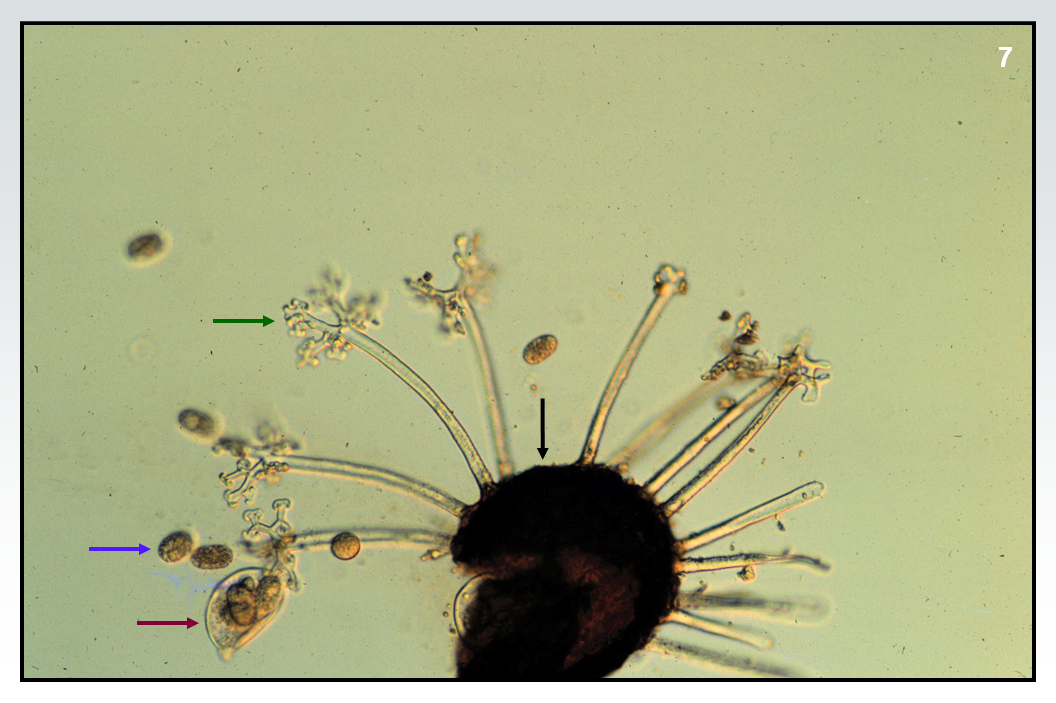 Plant Disease Diagnostics Clinic
Plant Disease Diagnostics Clinic

Play narration:
CHARACTERISTICS OF FUNGI: SPORES
Fungi can also produce fruiting bodies when they reproduce sexually, and in this particular case, I’m showing you a picture of the sexual fruiting bodies of one of my favorite fungi. This is a powdery mildew fungus that you’re seeing here. And, what’s interesting about this particular fruiting body is that the center portion is just an enclosed sphere. This one kind of looks like a Pac-Man, because I’ve crushed it open under the microscope. And, what I’m trying to do when I crush it open is release bags of spores that will be inside this center sphere. You can actually see one of those bags next to the red arrow. If you take a look at the, kind of the mouth of the Pac-Man on that spherical structure, you can also see the edge of another one that’s popping out. Inside of these bags, you’ll find these kind of brownish, very oval-looking spores, which are very characteristic of the sexual spores of powdery mildew fungi.
On the center sphere, which is technically called a chasmothecium, you can also see these, kind of radiating arms on that fruiting body. These are modified hyphae called appendages, and what’s really cool about these particular structures is they are very, very ornate. And, in this particular case, you can see the green arrow. The end of that appendage kind of looks like an antler. And quite frankly, depending upon which powdery mildew you’re dealing with, those appendages will have a different sort of look. In this particular case, they look like antlers. There are other types of powdery mildews where those arms will come out and form perfect spirals. There’s another type of powdery mildew where they actually look like spikes that come out from that center sphere, and in that particular case, when it gets relatively humid, those arms, those spikes, will actually bend down and lift that sphere up off the surface of the leaf, and that helps when the spores are released, getting those spores in wind currents, so that they can be moved away from the leaf surface.
Quite interestingly, if you know what those appendages look like, you know how many bags of spores that are inside that center sphere, you can actually identify, at least to genus, the particular powdery mildew that you’re dealing with. In this particular case, you’ve got more than one bag of spores, you’ve got these radiating appendages that look like antlers, so that tells me that this particular organism is what’s called Microsphaera, and that’s a powdery mildew that commonly occurs on Viburnum.